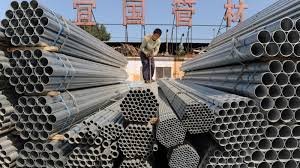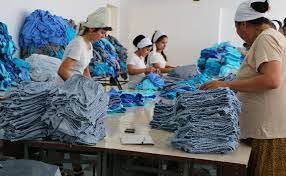Globaltraded.com — As the COVID-19 pandemic recedes, the global economy is gradually showing signs of recovery. Australia, as one of the advanced economies heavily reliant on international trade, faces significant challenges in efforts to revive its export performance. But have these efforts paid off? Or is Australia still struggling amid the global economic slowdown and geopolitical challenges?
The COVID-19 pandemic caused a major shock to Australia’s export sector. In 2020, the value of the country’s exports dropped by 13.2% compared to the previous year, to AUD 373.1 billion. Global lockdowns, supply chain disruptions, and reduced demand from key trading partners such as China and the European Union were the main causes of this decline.
However, by 2023, the situation began to improve. Data from the Australian Bureau of Statistics (ABS) revealed that the value of Australia’s exports surged to AUD 528.8 billion in the 2022-2023 fiscal year, a more than 40% increase compared to the worst of the pandemic.
The main factor behind this recovery was the rise in global commodity prices, especially in the energy sector. High demand in international markets for coal, liquefied natural gas (LNG), and iron ore gave a significant boost to Australia’s economy. Additionally, export market diversification, particularly towards Southeast Asia and India, helped counterbalance the trade tensions with China.
Australia’s export performance heavily relies on a number of flagship products, most of which are raw commodities. Here are some key sectors driving Australia’s export revival post-COVID:
- Iron Ore
Australia remains the world’s largest exporter of iron ore. In 2023, iron ore exports contributed AUD 121.7 billion or about 23% of Australia’s total export value. The main market remains China, although there has been diversification towards other Asian countries. - Energy (Coal and LNG)
Coal exports reached AUD 110 billion in 2023, an almost 70% increase compared to 2020. The surge in prices and global energy demand after the pandemic was a key catalyst. LNG exports also hit a record AUD 92 billion, driven by demand from Japan, South Korea, and India. - Agricultural Products
The agricultural sector also showed significant recovery. Wheat and beef are the primary commodities exported to Asia and the Middle East. In fiscal year 2023, wheat exports totaled AUD 12.1 billion, while beef exports contributed AUD 9.3 billion. - Other Minerals
In addition to iron ore, Australia is also a leading exporter of copper, gold, and lithium. Lithium, used in electric vehicle batteries, has become increasingly important in Australia’s export portfolio, with export value reaching AUD 7.1 billion in 2023, a 46% increase from the previous year. - Education Services
The education sector, which was hit hard during the pandemic due to travel restrictions, is now showing signs of recovery. In 2023, education exports amounted to AUD 40 billion, though still short of the pre-pandemic level of AUD 50 billion.
Despite the significant increase, Australia’s exports still face several challenges. Geopolitical tensions with China, Australia’s largest trading partner, create considerable uncertainty. In 2020-2021, China imposed restrictions on several Australian products, including wine, barley, and coal, as a response to diplomatic strains.
Furthermore, the global economic slowdown driven by high inflation and rising interest rates in various countries may dampen future export demand from Australia.
Another challenge is the pressure on the agricultural sector due to climate change. Extreme weather events such as droughts and floods affect crop yields and agricultural productivity, which are critical to Australia’s rural economy.
Australia has taken strategic steps to address these challenges by building new trade alliances and expanding its export markets. The Australia-India Economic Cooperation and Trade Agreement (AI-ECTA) is a key step in diversifying export markets. Additionally, partnerships with ASEAN countries have been strengthened to reduce dependency on the Chinese market.
This diversification is beginning to show results. In 2023, exports to India grew by 65%, driven by high demand for coal, LNG, and agricultural products. ASEAN markets also saw a 30% increase in trade value.
To ensure sustainable export growth, Australia has prioritized innovation and sustainability. Both the government and the private sector are making substantial investments in green energy technologies, including hydrogen and batteries. These projects not only create new export opportunities but also help meet low-carbon emission targets.
The education sector is also being revitalized with large-scale promotions to attract international students. The government has relaxed visa policies and provided incentives to higher education institutions to enhance their appeal.
























































